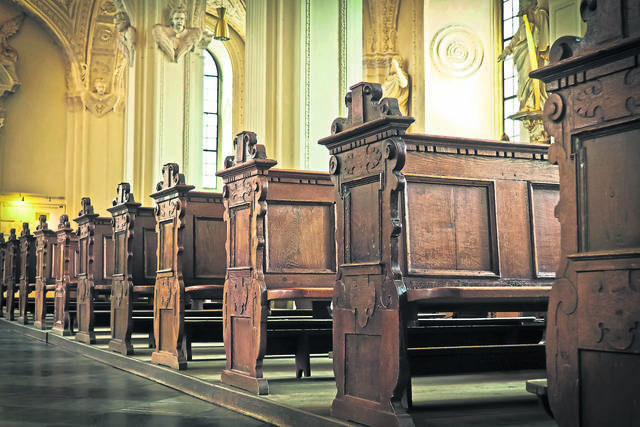https://mirror.triblive.com/local/regional/acts-of-violence-prompt-pennsylvania-state-police-to-increase-patrols-at-places-of-worship/
Pa. state police increasing patrols at places of worship

Over the weekend, Pennsylvania state police in Indiana County checked on nearly five dozen churches and houses of worship.
The visits, spurred in part by Saturday’s synagogue shooting in California, are part of an expanding effort to increase state police presence at places of worship around the region.
“We’re doing more school checks and church checks this year than perhaps we’ve ever done before,” said Trooper Cliff Greenfield, spokesman for the Indiana station. “I would say that’s just in light of recent events.”
Command staff want higher visibility at churches, especially on weekends, in the same way that school checks during each shift have become routine, said Trooper Stephen Limani, spokesman for the Greensburg station.
“We’ve just kind of added churches to our list,” he said.
So far this year, Limani said he has visited 30 places of worship in Westmoreland County to conduct church security presentations.
“It’s a shame. As much as I enjoy talking to them, I also feel sad. I’ve been a trooper for 20 years, and this wasn’t on my radar when I started,” he said.
Attacks on worshippers and places where they worship have become increasingly common, and not just in the United States.
In 2015, a white supremacist shot and killed nine people attending a midweek Bible study at an African Methodist Episcopal church in Charleston, S.C. In 2017, churches in Tennessee and Texas were the scenes of mass shootings.
In October, an attack on a Squirrel Hill synagogue left 11 worshippers dead and two wounded. Five responding police officers also were wounded.
The Tree of Life shooting hit close to home, as did an arson fire that destroyed a Lutheran church in Indiana County in February, Greenfield said.
“The people here locally are concerned about that. So we just want to do what we can to help them feel safe and be as present as we can be,” he said.
More recently, mosques in New Zealand and churches in Sri Lanka have been targeted, leaving dozens dead.
On Saturday, the last day of Passover, a gunman walked into Chabad of Poway, located in San Diego County, Calif., and started shooting, killing one person and wounding three others.
Such events have Pennsylvania state police doing more to include churches in routine patrols, Greenfield said.
“These checks we’re doing now are mainly precautionary,” he said. “Troopers certainly are welcome to go to a church while services are in session. We just want people to see us there and in the area as much as possible. That could include Sunday morning and other times during the week when there may be an event.”
State police also offer free security assessments of buildings through the agency’s Risk and Vulnerability Assessment Team. Local community services officers give safety presentations to churches upon request, said Ryan Tarkowski, state police spokesman.
“A popular one right now is the active shooter presentation,” he said.
State police teach the run-hide-fight approach that stresses getting away from the shooter, finding a safe place to hide and, as a last resort, fighting back, Tarkowski said.
“The worst thing you can do is nothing,” he said.
Some churches have elected to go a step further and hire security consultants, form security teams or take advantage of security training.
In Westmoreland County, churches have availed themselves of training from Georgia-based firearms instructor Rodney Smith and from the Ohio-based ALICE Training Institute since 2017. Smith is returning to the area in June to offer more security training to interested churches.
This week, state police issued a community awareness bulletin urging churches to take extra precautions in light of the fact that they are considered “soft” targets.
“Many of these places are also open to the public and have easily accessible schedules for services and events. This welcoming and open nature increases the security risk to houses of worship, regardless of the religion, of being subject to malicious attacks,” said the bulletin, titled “Protecting Houses of Worship and Faith-Based Events.”
The bulletin said churches should:
Assess their buildings and grounds for vulnerable areas. Understand suspicious behavior and how to report it. Use the “See Something, Send Something” smartphone app (not intended as a substitute for calling 911 in emergency situations). Create emergency plans for their facilities and provide staff with training and resources.More information can be found at the FEMA website for “Resources to Protect Your House of Worship.”
Copyright ©2025— Trib Total Media, LLC (TribLIVE.com)
